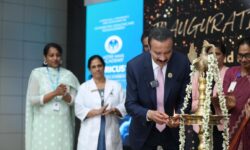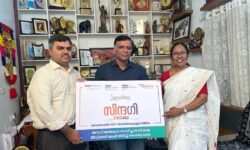This is not the old world of tactile things anymore. Much of it is virtual, be it the games we play or the things that we do. Medical science too is turning to Virtual Reality (VR) technology to find solutions to the many challenges the health care system faces today. And, not surprisingly, VR technology today playing a key role areas ranging from general diagnostics, medical training to surgical procedures.
Virtual reality is an immersive, three-dimensional, computer generated environment. Users can interact with the environment in a realistic manner using special electronic sensors. Traditionally, this technology has been dedicated to gaming and entertainment. But increasingly virtual reality is being adopted by other industries ranging from military, aviation to mainstream professional development.
The immense possibilities that VR offers was view at a 3D live open operative workshop, the first of its kind to be held in India, at Amrita Institute of Medical Science, Kochi, Kerala. Conducted using the technology of Rays 3D, an entertainment company, this workshop was held as part of the medical conference of surgeons, Brascon 2019. Virtual Reality (VR) Interactive medical content was used for the surgery.
Anubha Sinha, founder and managing director of Rays 3D, which is the only Indian company selected for the technology award instituted by the Los Angeles-based Advanced Imaging Society, says that Virtual Reality (VR) technology can open a whole new world before doctors. At the workshop, they could feel like they were involved in the surgical procedure. Besides giving a true-life experience to the doctors, VR also help save 30% time needed for surgeries.
The 3D imaging helps doctors to take quick decisions while performing surgeries. This technology is very useful in surgical oncology and treating obesity. One of the most obvious applications of virtual reality is in teaching anatomy as 3D visualisations of the human body can be readily manipulated and dissected in similar and perhaps more precise ways than cadaveric dissections.
Another application for virtual reality in medical education is peer learning. Learning together in a study session is one of the most effective ways to learn as medical students. It forms an essential component of problem based learning, which is adopted by many medical schools in the UK and abroad. There is also enormous scope to use virtual reality in emergency medicine training such as cardio pulmonary resuscitation (CPR). Realistic emergency scenarios can be created on virtual reality giving students an authentic emergency scenario.
Traditionally CPR training is carried out on dummies. However, real life situations can be vastly different from this. Virtual reality can bridge the gap between dummies and reality. An advantage of this is that an infinite number of scenarios can be created instead of practising on a limited number of models in a limited number of scenarios.



